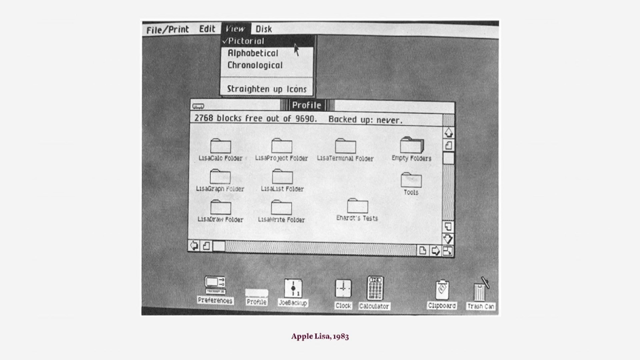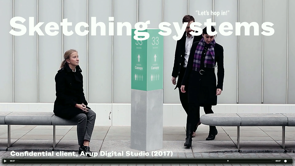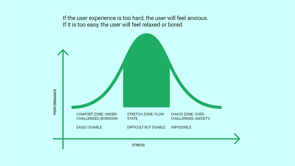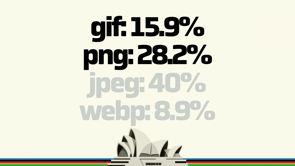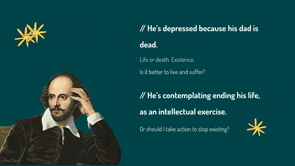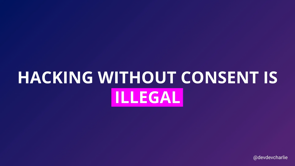
Hello everyone!
Thank you so much for the warm welcome!
I'm really, really excited to be here today to chat with you all about this really interesting topic called "friction," and yesterday, in the talks that we had in this very track, there were a couple of really fascinating gems that came out from Italy, from Crystal, about this idea of how friction can potentially cause frustration in user interfaces and patterns.
But I'm going to come here to tell you all that.
Friction is cool, right?
It is a little bit sciencey, it's a little bit nerdy, it's a little bit magical.
These were all things that, in my journey, learning a little bit more about friction, I wanted to come here and share with you all today.
So when we think about friction, it might be something that could feel like an obstacle that's getting in the way of what we want, or something that where there's a bit of tension, you know, maybe just a distraction.
Cuties, it can be associated with terms like agitation, irritation, resistance, abrasion, attrition, and chafing.
Yikes!
It also challenges some of the very core principles that we have as designers and makers, and creators in the room.
Design 1 0 1 might tell us, all right, well, friction potentially can go against the basic principles of design.
We, as designers and makers, and creators in this room, are trying to make things simpler, right?
Trying to remove obstacles and remove steps, or helping people to get to their goal faster; getting rid of roadblocks or inconveniences along the way, right?
But what if I told you that friction has an opportunity for us to maneuver, to grow, to move through these obstacles that might be presented in front of us to learn to evolve?
By the end of this talk, I'm really hoping you'll gonna be putting friction into everything.
I hope that you are going to love the awesomeness that friction can bring.
All right, so ready?
Let's get uncomfortable.
Yeah!
Here are some ways that I've explored that Friction can be irritatingly good: there's only four ways that I'm going to be summarizing today because there are actually so, so many types, but I'm just going to start with the kind of the core ones that have fed through in some of the work that I'm doing.
First of all, friction can potentially help us to prevent errors.
This is the idea of friction: being able to potentially help you understand the consequences of the actions that you are about to take, making it harder for accidents to happen.
This might be a pattern that we see quite frequently all around us.
So not along if you know quite familiar with these if you're about to empty your trash can, and this is an affirmative, destructive action that one might be taking, but you can't undo it.
So it's a serious, important gate where friction provides an opportunity for you to go, "Oh, are you sure?" Or how about how Help Scout might go that extra step further.
So in the previous example, there was a button that you could press to confirm in Help Scout to be able to remove a user from your account list, you have to literally type in the word delete.
Now, this extra intervention and this extra prompt means that they can emphasize the importance of it.
And this is the key, it could be an irreversible action that you might not want to take.
So this friction point becomes a good thing, right?
Not with me.
Yeah.
Yeah.
Or in this recent scenario where I was checking in on a flight over here from Perth, hello to all Perth people.
Hello!
There's a really interesting little UI pattern that Virgin Australia have, and it's somewhat jarring because it doesn't actually make sense, and yes, their brand color is red, so an affirmative action being red might be all sorts of confusing when green's good and red's bad, but green is also no.
Anyway, my point is this interruption point, this prompt, gave me a double take, and I do this regularly, so even I was confused.
Well, I'm confused every time, I'm confused when I wake up.
But it was that kind of moment where, because it's such an important action, this is going through security gates.
You don't wanna be pulled up by the barely folks at the security gate going, oh, did you not notice the friction screen that we added in your checking process?
Anyway, irritating, wild, but good.
So I'd like to draw it to this kind of similar analogy of, if you said, Hey, Kat, hey Kattle if you were to knock that glass off the table, that glass, we're not going to be able to use it again and it's going to be gone forever.
So, are you sure you wanna do that?
Right?
Yes.
Yes, the cat was sure.
Okay, in way number two that I want to explore.
Irritatingly, good friction might be able to help add value.
Now, there's lots of examples out there about the IKEA effect.
There are the cake mix where you, add an egg, adding value.
I won't go into those today, I wanna talk specifically about user experience and how friction might be able to help us convert it all, or retain better, or have those points where even prices can be positively impacted by the way we design them in.
So an example, which is actually quite recent, has everyone, everyone seen the Duolingo?
One yeah!
A couple of nods around.
Okay.
Well, Duolingo recently shared on the bird's social media site that we use the example of where they got, they put in a gate and a prompt where they asked the user to select or user learner, apologies, learner, to select their learning goal, their learning streak goal, as opposed to pre-selecting it for them.
Now, in this micro action, their retention increased and their product usage churn decreased.
Now this is pretty amazing, right?
Because in this point, they've had to interact with it, it's a bit annoying because it's an extra action; we're not removing steps, we're adding a step, yet it had commercial benefit and in another way, and most of the case studies you'll see out there about good friction being part of design processes is Airbnb.
By the very virtue of travel and the experience, there's the opportunity for serendipitous moments, and I'm going to talk about this a little bit later, and I've also got some notes at the end as extra links.
First, Steve Seltzers excellent talk on the subject, but this is the idea of changing it for business dynamics and business benefit.
So you can make the case for Airbnb as an example, putting in quite a risky move of asking the travelers to be in contact with, directly with the host and interact with the host, and that could be risky because you just don't know what to expect, and that was kind of the comparison to or the other way would've been contacting through Airbnb directly.
But what they actually found through this and numerous case studies was that the sentiment and satisfaction score increased in the product because the hosts themselves knew the most about the properties and the personalization, and connection.
That kind of collision of human beings was something that added value.
Fascinating, right?
So in the third way, friction can also help with protecting people, and I think this is a pretty powerful way.
It's this idea of that, in the world that we're in today, we have this sense of autopilot.
You know, this we're getting, trying to get to goals from A to B as quickly as possible, and removing the human autopilot condition could potentially help people to just in those moments come back to consciousness and regain control of what they were doing.
We love examples, so my example might be something like Netflix, which is designed for bingeing it's designed for consumption and designed to hold our attention.
That is the metric, right?
That's being measured.
It's so that we can consume.
But then, Netflix, how many of you in the room are familiar with Netflix and use it?
Okay, majority, all right.
Good, because you might have noticed in your TV series binging that you might have get a prompt that comes up, and I didn't grab an example of it, but imagine with me.
This prompt that comes up that says, are you sure you're still watching?
Would you like to continue?
And it's something that you can turn off, and in fact, as a customer voice friction point, there were numerous complaints about this.
And there's some business cases around it, so I'm not going to go in, go into that, that there could be benefits around retention, and no doubt Netflix have done all the science around, you know, tweaking that so that if you've stopped binging for something, and you've lost your place, it might be higher towards churn, let's not go into that.
I wanna say that the human condition part of it is good.
You know, that interruption point for us to just take that moment to go," Oh maybe I don't want to be watching another four, or maybe I do." Even TikTok recently have introduced this concept, even this year of safety measures.
So they add in an interruption point which ask whether you might want to consider taking a break.
This is such a vital component because in an infinite scroll, an infinite consumption world, there's, it's unstoppable.
People are losing hours and hours of their time, and without something like this, when do we ever get the chance to look up?
And in the fourth way, through respectful nudging, this friction can potentially be gates, which ask people to consider the consequences of their actions before taking them.
There's a potential here to help teach responsibility along the way with the products and the tools that we're designing out for the world, throughout the world.
So here's an example, everyone used Slack here or have along the way?
Yep.
Lots of nods.
You get a little bit of a whoopsies preventer.
Yeah, you can use that, where if you are going to notify a bunch of folks within your channel, it warns you of whether you actually want to proceed, because you might not actually understand the consequences of that one swoop fell swoop of an action, but you get a little nudge to go, are you sure?
Hopefully most of you'll go "no, I don't wanna, at channel we don't need to do that." Asynchronous Anton's giving a great talk about that later.
Okay, and in another way, I'm going to use TikTok as another example because they are really ramping up their human safety measures.
They provide a prompt, if you've started, if you've typed in or in about to post keywords that could potentially be harmful or abusive, offensive in some way.
So they put a prompt there to go, "Oh, your message could be a bit, yikes." Are you sure you want to do that?
You decide, and you go forth.
All right, so what have we reviewed so far?
Only just the tip of the iceberg, you know, this idea of preventing errors, friction adding value, friction protecting people, and friction being potential for respectful nudging and social responsibility along the way.
There's a bunch more things, ways where it can help.
Unfortunately, you don't have the time to go into it today because I actually wanna talk to you about dogs for the most part.
But I kind of wanna have this leave you with this thought of there's so many more things that around us and products that we use that potentially need a bit of friction, right?
There's just the state that we're in.
So, wanting to really consider and be really conscious about those choices.
The people you all yell in this room have the power to do this, and in Crystal's talk yesterday about onboarding and the idea of terms and conditions and legal documents along the way.
That is a really important thing to know, to consent to before you are going in to use a product or to interact, but it's so easily dismissible if it's upheld up front.
You're about to take another action, you're like, oh, terms and conditions, they're all the same, right?
But they're not, and they're really really important.
So why don't we think; okay, let's add terms and conditions in the context along the journey, as opposed to, or up front door or at the end door, or hidden away in a drawer somewhere.
As I was kind exploring this topic, it took me back to a quote from many months ago from Mike Monteiro, and it's this idea that as designers in the room, we've got the power to influence.
We've, we hold, so much ability in that way to shape the world that we are trying to create in front of us, and so his call was for designing with responsibility.
And the part that I really wanna pull out here is the responsibility to help create a better world for all.
I'm all about a better world.
But better for who?
Is it for your customers, your consumers?
Is it better for you?
Is it better for the business or the profits?
Is it better for society?
Is it just better?
So we iterate and we optimize, right?
As part of our roles, we experiment.
We try and find those tweaks to increase conversion, improve retention, reduce churn, or in other ways we might be looking to increase consumption time on page.
It's, I suppose, it's these examples of these short term goals that we have immediately in front of us, these micro-actions.
But, how long is this state of better for?
Is it just for this week?
This month?
This part of the quarter?
The cycle?
There's a, you know, a talk on shape up by AI?
Is, Ooh, I'm tangled.
Or is it, you know, the next five years, are we looking longer term or mid-midterm?
Is it beyond?
Are we trying to shape the future?
And we, there's been some interesting combos already about AI and whether that is becoming the integrated norm for us.
So when we're thinking about things like these short-term goals that I was just referring to, we might introduce something like infinite scrolling.
Of course, we're going to get more page views and consumption with that, right?
Yeah.
Or we might do autoplay like what Netflix have and YouTube have so that people continue to consume, and if that is the one metric that you're working towards, and you are tweaking and iterating towards that, of course that's what you are going to be working towards.
Yet, what is the long term impact of that?
Oof!
Potentially, that collective impact for us.
I just wanna, again, hold this thought.
Could the absence of friction with these goals that we have potentially be detrimental?
Bonus card time.
All right, I wanna talk about how friction may potentially be able to create meaningful change, changing the world, changing life for everyone, and challenging the norms or being able to break down these implicit or explicit biases that we might have that hold us back as a society.
So in my context, in the world that I live in, it's going to be that question of for whom?
For who we doing this for?
Well, pets and for people too, but mainly, pets.
I don't know if you could tell, but I'm a pet person.
So I want to provide some context about pet rescue.
If you're not familiar with Pet Rescue, we have a pet adoption platform that's been running for eons, connecting people with pets for years, and we are having great success with it.
We have a huge amount of volume.
Last year, we had 6.1 million visitors come to our website looking people, looking for pets.
People like you and I in this room.
Now, I'm not doing this as a, you know, a bit of a bragging point, but also bragging point.
If you wanna check out any of pets to adopt they're on there.
But the reason I'm bringing this up is because we've got the opportunity to affect change at scale because of the volume, because of the traffic that we've had coming through.
And so when I say we, we introduce friction at pet rescue, and we do it intentionally and deliberately, right?
It's something that makes our product, if we're talking this product to the platform, harder to use and harder for people to get to their goal, but I promise you it's worth it.
And I'd like to share; how?
But more importantly, why?
For context, the objective for us in adding friction into the design process when it comes to the pet search is to challenge and break down stereotypes that impact the social desirability of pets.
Hold onto that thought of social desirability.
The why, the long-term outcome that we are looking towards, is creating this future where every pet is safe, respected, and loved.
All right?
So I wanna take this moment to ask you all to just have a little ponder, on when you look at the pets up on this screen, which ones you might think are, which one you might think is the most well-behaved?
What about the most family-friendly?
What about the most active?
The most laziest?
The healthiest?
What about the most expensive?
Cutest?
We've all got a preference.
Well, how about which one of these is a rescue pet?
Holding that thought, and perhaps consciously or unconsciously, I mean, you might not have had an opinion or a perspective on this, and that's okay too, but if you did go, oh, this dog, that dog for this answer unconsciously or perhaps consciously, implicitly, or perhaps explicitly, you held a preference in that answer, and it was based purely on appearances.
Hold that thought.
So at Pet Rescue, even though it's the most, one of the highly, most highly requested criteria to filter down for pets, we don't include the ability to be able to search by breed.
People can search by species, location, age, sex, or even like fur length, but there is no ability to search by breed on pet rescue.
And so I mentioned intentional and deliberate as the pillars for this.
It's not a technical limitation, either.
It's relatively straightforward and trivial to add it in.
We've got the capability in there.
Have a chat to Tom in that corner over there, who's also on the leaderboard out there, which is great.
There is that.
So, sorry, I just got distracted by Oliver, who was giving me a great cue, which was a friction queue of I'm coming up to time, which is fantastic.
Yes, so even though it's most popular feature, and it comes through in spades, in into our inbox, we get hundreds and hundreds of inquiries and suggestions saying, please add breeding, it'll make it so much easier, I'm looking for a particular type of pet, so the demand is there.
Yet, why don't we include it?
Why?
All right, so let's go deeper.
One of the challenges, big, deep challenges that we have in the sector that we work in is that stereotypes and generalizations and labeling, and implicit bias, so we think breeders are label can potentially be non-progressive for us to actually change this mindset of breeds and pets as labels.
So generalizations, especially if inaccurate and based on just looks and appearances alone.
Could do, yeah, like I said, more harm than good.
So gosh, imagine if we did that to humans in society, like with gender or people of color, or race, or ethnicity, and background.
Oh, wait!
It's awkward, isn't it?
And the way that humans assign value to, whether by intention or not, whether it's unconscious or conscious, affects pets in this case and their social desirability of them.
There's assumptions that are laced that come with the labels, and this impacts this future that I was describing.
The future that we want to see every pet, safe, respected, and loved.
The conversation goes a little something like this.
Hello!
Hi!
I want a (insert any breed here) any breed, because I'm looking for a pet that is (insert any generalization here)" and we talked about a few of those before, is examples, right?
So family friendly, low energy, high energy, inactive, well-behaved, smart, hypoallergenic.
These are all things that put rather some breed and then associate associates labels with said breed.
And it would make total sense if you thought those things.
Total sense because, and it can be explained by this this idea of something called the mere exposure effect or the familiarity principle.
If you haven't heard of this principle before, it's a really interesting one, right?
And it's this thought that, through potentially mainstream media or your upbringing, your background, your exposure to particular things that look a certain way, it describes our tendency to develop a preference, whether that's in the short term, long term, something that just continues with us because we are familiar and familiar with also the relationship between how a pet might look or a person might look to how they might behave, or what they might be all about, or what they might like.
But I'm here to tell you all that those stereotypes are wrong, and I've got some science to prove it.
There's been, the studies have been around for quite some time that breeds are not a good indicator to determine a pet's personality, temperament, behavior, or even if you are, you'd be allergic to them or not.
I'm not going to go into it much, yet, I can't, I don't have the time to go into it deeply, but I wanna tell you that the research has been around for quite some time, but in April of this year, 2022, that is the year, yes!
That research is now starting to be, well, new research has come about and published, and people are starting to talk about it in the mainstream now, which is a really exciting opportunity for us to edge towards that change.
But this has been something in development and in the works for quite some time, we're just starting to catch up.
So it's really, it's a really great thing to have, as you know, the backing from that science.
Science is good.
So with that knowledge, what if I told you then that going back to not including breed as a way to be as a filter in a pet search, which is backed by a lot of demand for that feature coming through, what if I said that by adding that as a generalization, it's going to be detrimental to the pets that are listed on our website and the goals that we have towards that respect, and equality, and love for pets no matter what they look like in appearances.
So, looking back at this screen, I asked you before which ones you thought were most well-behaved or most energetic?
Most low energy, smartest, cutest?
The answer is there's actually no way we can tell just by looking at them, just by appearances alone.
So they're not including, I'm twisted again.
Not including the ability to be able to search by breed, provides us with these serendipitous moments, these chances for these challenging conversations, confronting a little bit frictiony and the unexpected.
So I wanna share a couple of stories with you all because the social proof is everything, right?
This is something that is, the footprint of that, footprint of that potential change that's happening, and I love it.
We absolutely love it when these stories come through.
Mena, as an example, grew up with a small dog or small dogs rather, and she had always imagined that she would end up with a small dog that she could pick up, cuddle, and, you know, smoosh in all the things.
She's ended up now with two very large buffs very dorking, dorky-looking dogs, and this family couldn't be happier.
What a joy!
And then to go a step further, when I was talking about social change and changing mindsets and potentially the way we perceive when we get testimonials that come through like these, we've got a whole category of happy towels and they just incredible.
But this when people tell us that breed didn't even matter, and it didn't even come up as a thing that they were thinking of to search.
That my friends is invested in long term, deliberate, intentional social change.
If we had added breed filter in just like what people wanted and asked for, would've been easy.
It would've made a lot of people happy, "Hey, we made that thing happen for you, new feature, new capability." These folks and the folks that message us might not have had the opportunity to find their best friends.
Ohhh!
So, my last thought, and I'm actually running on time, which is incredible.
The last slide I wanted to share was in this kind of world that we are living in today, where we are designing and building for conveniences, we're building in for speed and to take away those friction points so that we can go into autopilot and just get, go to the destination and get the thing done and not think and not have friction points.
But I hope today I've made the case for friction being something that could be a huge value, an asset to use in our design processes, and to challenge the idea of better, all right?
What does better look like for who and for how long?
So I'm hoping, popopopopop!
Make me think, I'm hoping that you are gonna add friction to absolutely everything, and you're gonna send me the photos and if there was one screen that you really should take a photo of, is it, it's this little QR technology code up here.
Scan this.
I've compiled a bunch of resources there, if you'd like to kind of go along the journey with me.
I mentioned that there was a lot of things that I wanted to deep dive into, but, for a limited time, could not.
Everyone get it?
Still gonna be there.
Thank you!







